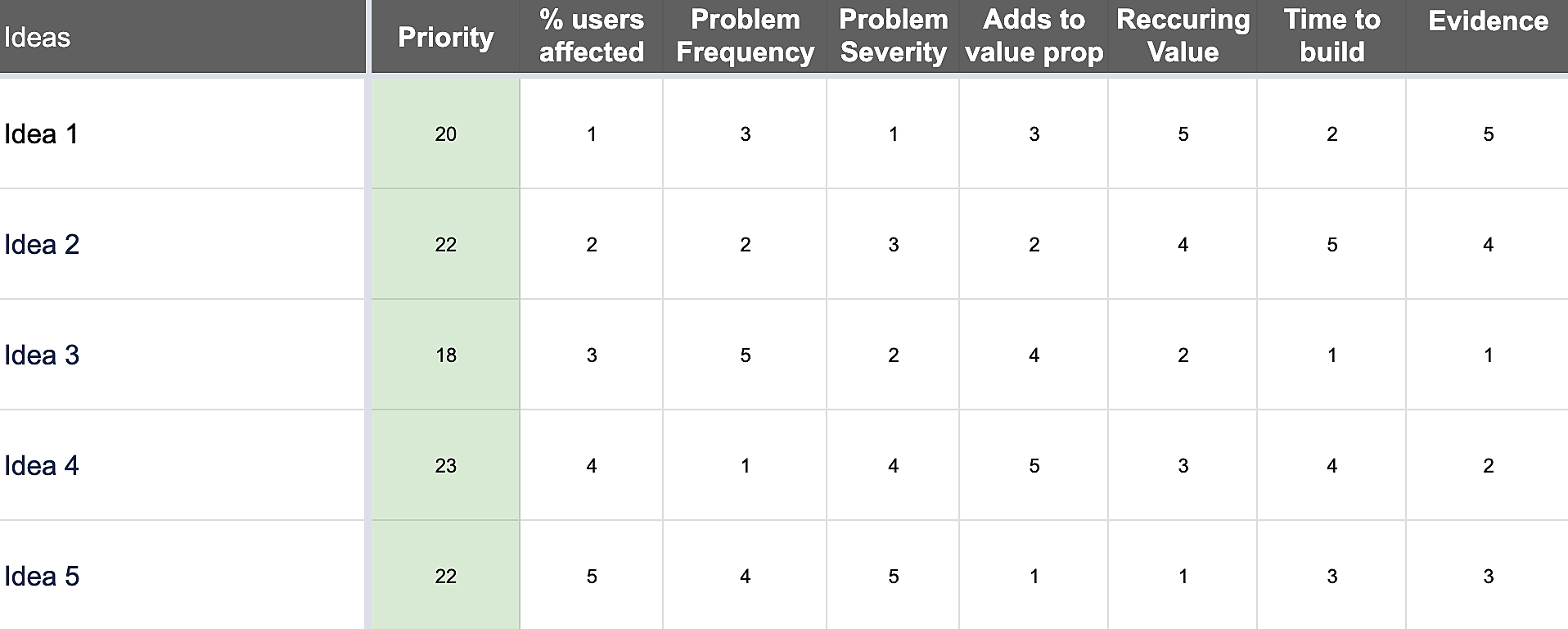Figuring out what to work on next is a complicated, multi-stakeholder problem that never goes away.
Look online for how to prioritise stuff and you will run into frameworks RICE, ICE and PIE. The problem with these frameworks is that everything ends up being rated a medium. The great ideas were obvious to begin with, and everything else ends up in the messy middle.
Look online for how to prioritise stuff and you will run into frameworks RICE, ICE and PIE. The problem with these frameworks is that everything ends up being rated a medium. The great ideas were obvious to begin with, and everything else ends up in the messy middle.
Stack ranking forces you to rank things from best to worse. You can never have two medium ideas, one idea will always get ranked better than the other.
You can also have as many dimensions as you want.
I typically start with:
I typically start with:
- The number of people that will be affected
- How often the problem comes up
- How severe the problem is
- How much value the idea adds to our primary value proposition
- How often people will get value from the idea
- How long it will take to build
- How much evidence we have that it will work
More than 7 dimensions and you’re getting into the weeds.
What’s cool about this is that you are only ever comparing options that are in front of you. You’re not asking if something is a good idea, you just looking at whether it’s better or worse than the other options on the table.
You add all the scores up and the ones with the lowest totals are the best. So idea 3 would be the winner in the example below.
The system is far from perfect, but it does tell you why the best idea won. This is important in a team. If I pitch an idea that doesn’t get picked up, I want to know why. The stack shows me what dimensions it did well on and which ideas beat it in other areas. It helps me understand the tradeoffs the decision-maker had to make.
Even if a HIPPO rules out an idea, having a stack makes it easier to ask why. When the reason is a dimension that wasn’t on the board, you can add it to the board as you build up a clearer shared criteria for ranking things in your organisation over time.
Stackranking is not a silver bullet, but it helps.
These Hey posts are thoughts-in-progress, they're meant to be conversational. Let me know what you think. Replies to this email go straight to my inbox.
Stackranking is not a silver bullet, but it helps.
These Hey posts are thoughts-in-progress, they're meant to be conversational. Let me know what you think. Replies to this email go straight to my inbox.
